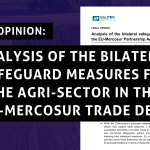As part of the dynamic leading up to the Paris Climate Summit, almost all European countries have developed greenhouse gas emission reduction targets for 2030. An overview of these targets can be found here. Some of these target are highly problematic, such as the Turkey’s woefully inefficient INDC. All targets including the EU’s are insufficient to achieve the objective agree in Paris to aim to keep temperature rise below 1.5°C.
The EU 2030 Targets
In October 2014, the European Council agreed on the 2030 climate and energy framework for the EU:
- a binding EU target of at least 40% less greenhouse gas emissions by 2030, compared to 1990 (This target is divided in a 43% reduction target for the sectors covered by the EU Emission Trading Scheme (EU ETS)and a 30% reduction target for the non-ETS sectors (Effort Sharing Decision/Regulation).
- a target, binding at EU level, of at least 27% Renewable Energy consumption in 2030
- an indicative target at EU level of at least 27% improvement in energy efficiency in 2030
The EU 2030 targets lack ambition
CAN Europe has been calling for much stronger targets: at least 55% greenhouse gas reduction, a 45% target for renewable energy, binding at the national level and a binding 40% energy savings target.
CAN Europe, together with trade unions, businesses, cities and other stakeholders is calling upon the EU to increase its 2030 targets, in light of the outcome of Paris. See here for a joint statement made by NGOs, businesses and trade unions.
The EU 2030 targets lack clarity
Not only does the EU need to increase its targets, it will also need to guarantee that the legislation that is being developed to implement the targets guarantees the highest level of environmental integrity.
The EU’s 2030 greenhouse gas reduction target is a so-called single-year target. The EU has not yet defined the emission reductions it wants to achieve in the period 2021 to 2030. Because CO2 and other greenhouse gases stay in the atmosphere for centuries, they build up over time. This is why it is the total cumulative emissions that matter to the atmosphere and that ultimately determine the level of change in our climate.
Depending on policy decisions, the EU’s carbon budget for the period 2021-2030 can vary by a staggering 6 billion tonnes.
In a report titled Gigatonne gap in the EU pledge for Paris Climate Summit CAN Europe translated the EU’s 2030 target of at least 40% emission reductions, into the exact amount of greenhouse gases the EU could emit between 2021 and 2030. The analysis reveals that depending on political choices, the EU’s “carbon budget” for the period from 2021 till 2030 will vary from 37 to 43 billion tonnes of greenhouse gases. This lack of clarity relates to:
- the carry-over of surplus emissions in the EU’s Emissions Trading Scheme (2.6 billion tonnes)
- accounting of emissions from Land-based Emissions (LULUCF) (1.835 billion tonnes)
- the possible carry-over of surplus emissions in the non-ETS sectors (Effort Sharing Decision/Regulation)(0.7 billion tonnes)
- the level of non-ETS sectors (Effort Sharing Decision/Regulation) that the budget will start from in 2021 (0.878 billion tonnes).



